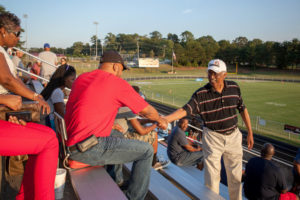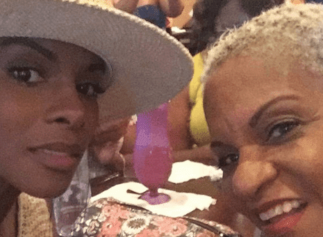
Cleveland Stroud, the only Black Council member in Conyers, Georgia. Credit: Audra Melton for The New York Times
All across the United States, local governments fail to properly represent the communities’ African-American population, especially in the South.
According to data published by the International City/County Council Management Association, only two of the 340 American cities where Blacks are more than 20 percent of the population were overrepresented in their local government.
About 200 were within one seat of their population and nearly 130 underrepresented Blacks by more than one seat.
This disparity between the community and those who represent it has plagued city halls for years, and some experts believe the cause of the problem is a combination of many factors.
According to some Georgia residents in one community, they may be underrepresented mainly because they are uninvolved and rather disinterested.
The New York Times spoke to people in Conyers, Georgia, and discovered that many Black residents were not actively participating in local elections.
“Life’s been busy – I’ve been trying to make that money,” said Lorna Francis, a Black local hairdresser who admitted she was not even aware of the city’s mayoral elections that were held last November. “And honestly, I only vote in major elections.”
She wasn’t the only one who felt that way.
Many Black residents felt like local elections were not important enough to get too involved with them.
According to the chief operating officer of Conyers, the low percentage of Blacks who actually own homes is another contributing factor.
The white city employee explained that when residents are renting their homes instead of owning them, they don’t tend to be too invested in the city’s government. According to The New York Times, Conyers’ ownership rate is only 38 percent while the state’s rate is at 66 percent.
“When you have rental people, this is nothing against them, they’re not as involved in the community,” David Spann told The New York Times.
Cleveland Stroud, the only Black member of the Conyers City Council, said he didn’t necessarily see a problem with representation in the city’s government.
“Does a councilperson have to be Black to represent Black voters?” he asked The New York Times.
Stroud says that the answer is no, and many Black residents seemed to agree.
Eleanor Johnson, a 61-year-old African-American chef, said that city officials have done a great job and they have even helped her launch her new restaurant, the Olde Town Bistro and Grill.
“The only thing I can tell you is Conyers has been great to me,” she said.
Of course, white leaders in the city still argue that there is a lot of work to do in order to reach fair representation within the city’s government and authoritative figures.
In recent years, the Black population in the city jumped from 33 percent to 57 percent and officials believe the local government needs to reflect that – even in the police force.

Sources: International City/Council Management Association (surveys 8,000 cities every five years); Jessica Trounstine, University of California, Merced
Some Black residents said they still felt like they had been racially profiled by police in the past, but Chief Gene Wilson said his attempts to diversity the police force have resulted in disappointment.
Wilson explained that qualified minority officers are in short supply but in high demand.
“We’ve got a lot of young brothers out here, and they choose not to be in the police service,” said one Black resident, 61-year-old Peter Vanderpool.
But even Vanderpool admitted that when it came to local elections, he didn’t tend to pay attention.
“To be very honest with you, I don’t know why,” he said. “I never paid any attention, really.”
Many solutions have been pitched for the issue of disparity.
Some residents claimed that local elections are just hard to keep up with.
“It’s not broadcast,” said lifelong Conyers resident Demarco Hamm, who also believes he has been racially profiled during a police stop in the past. “It’s not like a presidential election.”
Thus, moving local elections to even years to coincide with presidential elections could possible increase voter turnout for the minority community.
Other suggestions include finding a way to make voting less time-consuming for the working class, making it easier to register to vote and educating local residents on the impact they could have by participating in local elections.
